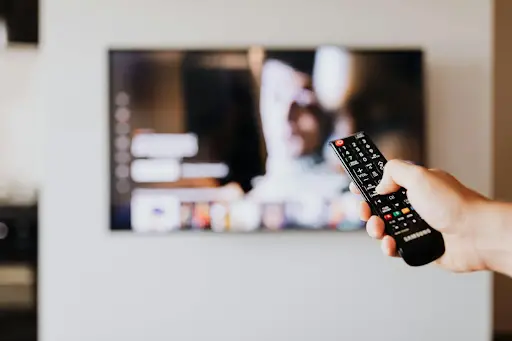
Top 5 Smart Home Technologies for Seniors: Enhancing Safety and Independence
Times are changing, and so are the ways to stay fit, especially for the elderly. While traditional exercise routines can sometimes feel monotonous or challenging, the advent of cutting-edge technology has revolutionized senior fitness.
Gadgets, apps, and emerging technologies are making it easier and more enjoyable for seniors to stay active and healthy.
Managing digital accounts can also be a challenge for seniors, making it essential to use secure and user-friendly tools. According to Cybernews, choosing the best password manager for seniors can significantly reduce the risk of forgotten logins or security breaches, while offering simplicity and peace of mind.
From fitness apps and wearable devices to virtual reality (VR) and interactive gaming systems, these innovative tools provide engaging and effective ways for seniors to maintain their fitness and enhance their well-being.
These advancements offer new and exciting opportunities for seniors to incorporate exercise into their daily lives, transforming the experience of staying fit, and healthy living into something enjoyable and sustainable.
In this article we explore the top five smart home technologies that are enhancing the lives of seniors.
1. Smart Home Assistants
Voice-activated devices such as Amazon Echo and Google Home, are becoming essential tools for seniors. These smart home assistants offer a range of features that simplify daily tasks and enhance safety.
Seniors can use voice commands to make phone calls, set reminders for medications, control other smart devices, and even ask for help in an emergency. Also with the likes of Jubilee TV universal remote for seniors, elderly people can easily connect to their children and have them set up automation to connect easily. The hands-free nature of these devices is particularly beneficial for those with mobility or dexterity issues.
Additionally, they can provide entertainment through music, audiobooks, and news updates, helping to reduce feelings of isolation and boredom.
2. Smart Security Systems
Home security is crucial for seniors living alone. Smart security systems, including devices like video doorbells, motion detectors, and smart locks, offer peace of mind by providing real-time monitoring and alerts.
Video doorbells such as Ring allow seniors to see and speak to visitors without opening the door, enhancing security.
Motion detectors can alert homeowners to unusual movements, and smart locks enable remote locking and unlocking of doors, ensuring that the home is always secure. Many of these systems can be linked to emergency contacts, ensuring that help is readily available if needed.
3. Automated Lighting and Appliances
Smart lighting systems and automated appliances can significantly enhance convenience and safety in the home.
Automated lighting, such as Philips Hue, can be programmed to turn on and off at specific times or activated via motion sensors, reducing the risk of falls during nighttime trips to the bathroom.
Smart plugs and appliances can be controlled remotely or set to operate on a schedule, ensuring that devices like coffee makers, ovens, and heaters are used safely. These technologies can help seniors maintain their independence by simplifying daily routines and reducing the need for manual intervention.
4. Health Monitoring Devices
Health monitoring devices are indispensable for seniors managing chronic conditions or those who want to keep a close eye on their well-being. Wearable health trackers, like Fitbit and Apple Watch, monitor vital signs such as heart rate, blood pressure, and activity levels, providing valuable data that can be shared with healthcare providers.
In-home health monitoring systems, such as KardiaMobile, offer tools for tracking specific health metrics, like ECG readings, enabling early detection of potential health issues. These devices empower seniors to take control of their health, promoting proactive management of their conditions.
5. Fall Detection and Prevention
Falls are a significant concern for seniors, often leading to serious injuries. Smart technologies designed to detect and prevent falls can be lifesaving. Smart flooring and mats equipped with sensors can detect a fall and automatically alert emergency contacts or services.
Wearable devices, such as the Philips Lifeline, feature fall detection technology that senses sudden movements indicative of a fall and can summon help even if the wearer is unable to do so.
These innovations provide an extra layer of security, ensuring that assistance is available promptly in case of an accident.
Conclusion
Smart home technologies are transforming the way seniors live, offering enhanced safety, convenience, and independence. By using devices such as smart home assistants, security systems, automated lighting, health monitoring devices, and fall detection tools, seniors can enjoy a higher quality of life with greater peace of mind.
As these technologies continue to advance, they will undoubtedly play an even more significant role in supporting the well-being of older adults.
FAQs
- How do smart home assistants help seniors?
Smart home assistants help seniors by providing hands-free control over various household functions, setting reminders, making calls, and even offering entertainment, all through simple voice commands.
- Are smart security systems easy to use for seniors?
Yes, smart security systems are designed with user-friendly interfaces and can often be controlled through smartphones or tablets, making them accessible and easy to use for seniors.
- What are the benefits of automated lighting for seniors?
Automated lighting reduces the risk of falls by ensuring that homes are well-lit when needed. It can be controlled remotely or set on schedules, providing convenience and safety, especially during the night.
- How do health monitoring devices work?
Health monitoring devices track vital signs such as heart rate, blood pressure, and activity levels. They can provide real-time data to the user and share this information with healthcare providers for better health management.
- Can smart home technology really prevent falls?
Yes, smart home technology can help prevent falls through the use of motion-activated lighting, smart flooring with fall detection sensors, and wearable devices that alert emergency contacts in case of a fall. These features ensure that help is available quickly if an accident occurs.